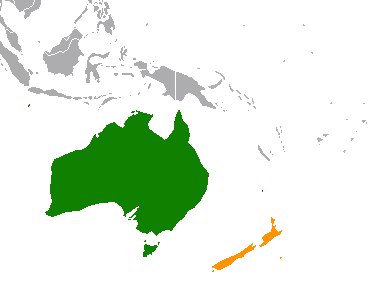I’ll let you in on a little secret.
There have been times when I need some illustrations of Auslan signs and I’ll go to New Zealand Sign Language Online Dictionary to see if I can get the picture I need.
*NOTE: I’d only advise you to do this if you are already very familiar with Auslan signs.*
While there is a close relationship between Auslan, BSL, and NZSL due to historical and ongoing contact between these countries, there are some signs that are different.
It is commonly stated that NZSL and Auslan are about ~95% similar.
I have to say, when I first started looking at and using the NZSL dictionary, I noticed how well designed, user friendly and supported it appeared to be.
What I mean by the latter term ‘supported’ is that it was clearly a government funded website and initiative.
I pondered upon why there appeared to be such a disparity between the resources we have here in Australia and those of New Zealand for our respective sign languages.
Australia, having a larger population and therefore larger Deaf population by default, should have resources on par with NZSL at the very least, right?
But here’s the difference.
Aotearoa, New Zealand has three official languages: English, Te Reo Māori and New Zealand Sign Language – with NZSL becoming official as of 2006.
Because of this recognition as an official language, it means that NZSL receives support and funding from the New Zealand government on a scale that we do not see for Auslan in Australia.
Here in Australia, Auslan has been recognised as a community language since 1989, thanks in large part to Trevor Johnston’s Auslan dictionary – Signs of Australia. But a community language is not an official language of the country.
Upon discussions with some Deaf friends, it seems highly unlikely that Auslan will ever be recognised as an official language in Australia.
One reason for this is because there are over 200 Indigenous languages that are older than Auslan; they would need to be recognised before Auslan could be.
Having said that, at this stage we are starting to see some wonderful Auslan resources starting to be made and shared in the community and education sectors.
It is my observation that these tend to be initiatives of individuals or Deaf-led businesses – not government. And this push/trend has been predominantly noticeable in the past 5-7 years (in my personal opinion/observation).
We are now starting to see some long overdue, high quality Auslan resources come about due to a range of reasons: the roll-out of NDIS, the attention and ensuing popularity that Auslan received during Covid (enrolments in Auslan courses rose exponentially with Auslan interpreters being seen on the news every day), and schools opting to have Auslan as a language as a subject in their schools.
For years we (Auslan educators and tutors) have been lamenting the lack of Auslan resources. We’re now starting to come into our own. I’m excited to see what the Australian Deaf community can do and how we can be involved in ensuring quality Auslan resources can be available for educators, learners and users of Auslan.
Hope you found this handy and keep up your Awesome Auslan!
Disclaimer: This information is entirely subjective and based on my personal experience, interpretation and understanding of the subject matter.
This blog was written in March 2024.
List of Auslan resources: Auslan Hub, MyAuslan, Twinkl, Auslan Journey.

As a Deaf person who has used, loved, and continued to learn Auslan throughout my life, it was when I started studying the Diploma of Auslan (Deaf cohort 2018) that I was awestruck by how beautifully complex Auslan is.

